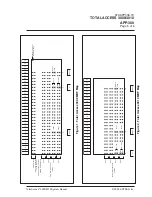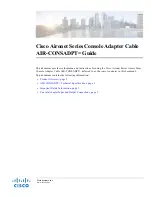
Total Access
®
3000/3010 System Manual
6TAAPP307-1E
TOTAL ACCESS 3000/3010
APP-307
Page 1 of 6
© 2002, ADTRAN,
Inc.
1.1
Standard Combo-Fed System Application
NOTE
References to common, but differing, parameters between the Total Access
3000 and the Total Access 3010, such as number of slots, will be conveyed
by the convention a/b. The “a” represents the Total Access 3000 parameter
and the “b” represents the Total Access 3010 parameter. For example, the
differing number of access slots in the two platforms, 28 for the Total Access
3000 and 22 for the Total Access 3010, would be displayed “28/22.”
1.1.1
Usage
The Standard Combo-Fed configuration will be used when several technologies are to
be used inside one Total Access 3000/3010 and it is to be DSX-1 and MUX-Fed.
Currently, the technologies that can be mixed together into one Standard Combo-Fed
shelf are:
• T1 (T1-OR)
• HDSL (HTU-C, H2TU-C)
• ISDN (HD-10 in 8 DSL mode)
• ODS-2 (QFO-C)
• DSX-1
When mixing technologies in Total Access 3000/3010, it is important to note that the
shelf can accomodate up to 28/22 modules of T1-ORs, HTU-Cs, H2TU-Cs, and QFO-
Cs all of which have the option of being in a 1:1 protected or non-protected mode. If
the QFO-C modules are non-protected, then the limit is 14/11 QFO-Cs per shelf. The
capacity for the HD-10 is 14/11 because the module is a double-wide unit, and the
module does not have 1:1 protection capabilities.
When different technologies are used in the same shelf, the wiring should follow the
Standard Combo-Fed table (see
). This assures the user that all technologies
reach the network via DSX-1 A and B connectors (pairs 5 through 8, see
for pinouts) the BNC RX and TX connectors, and the loop via the MDF (pairs
FDF for fiber applications.
NOTE
The H2TU-C delivers its HDSL2 signal to the loop on pair 2 only.
As long as these guidelines are followed, there is no specific ordering of technologies
or modules within the Total Access shelf.
















































